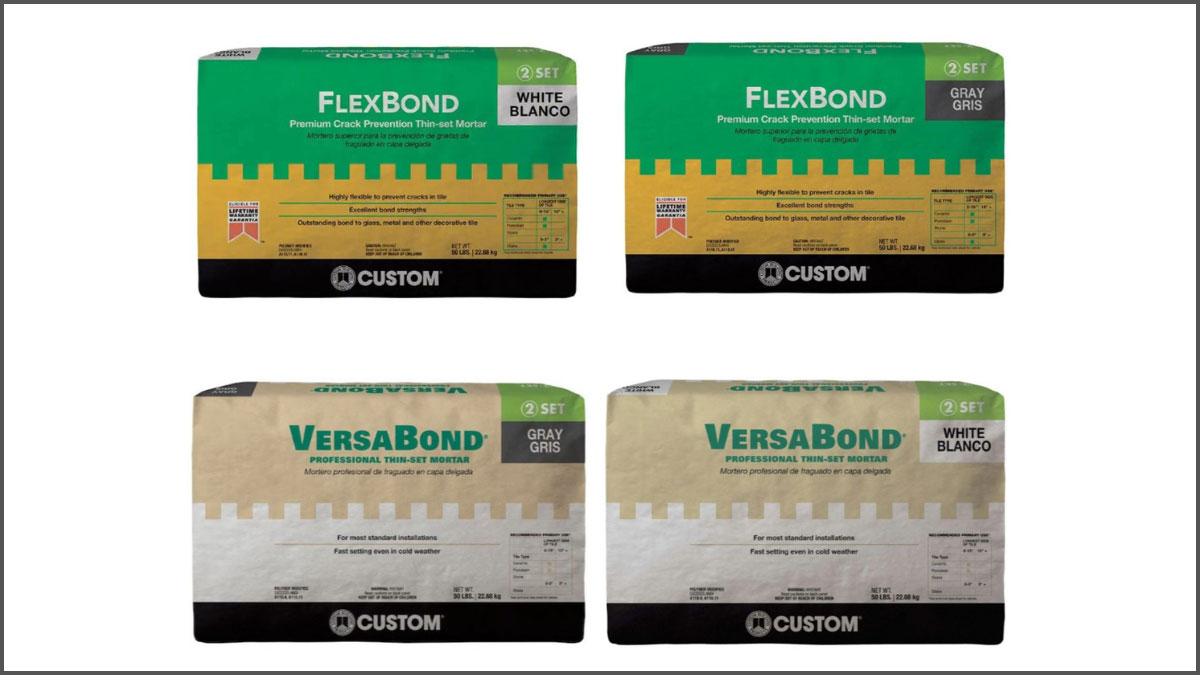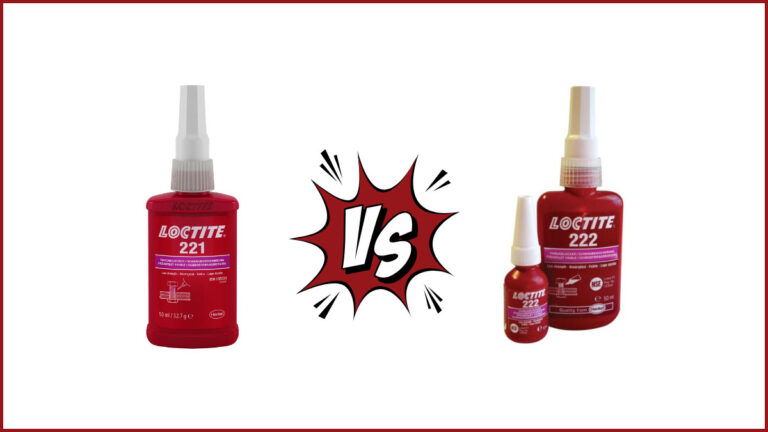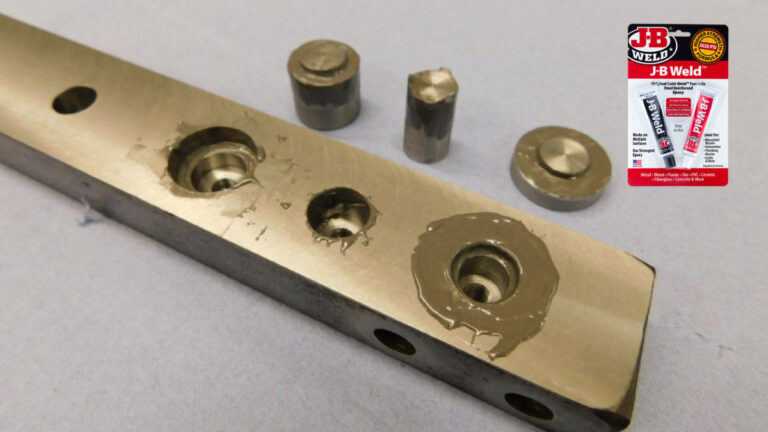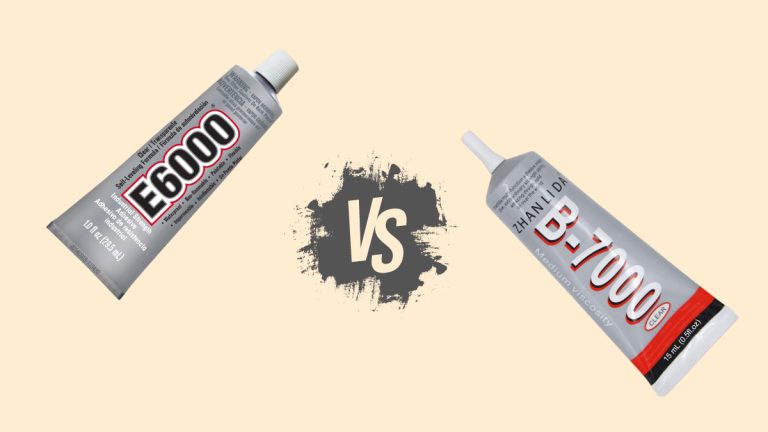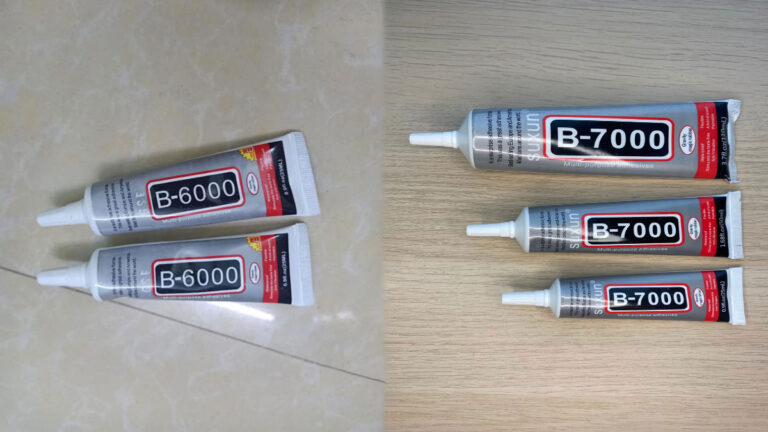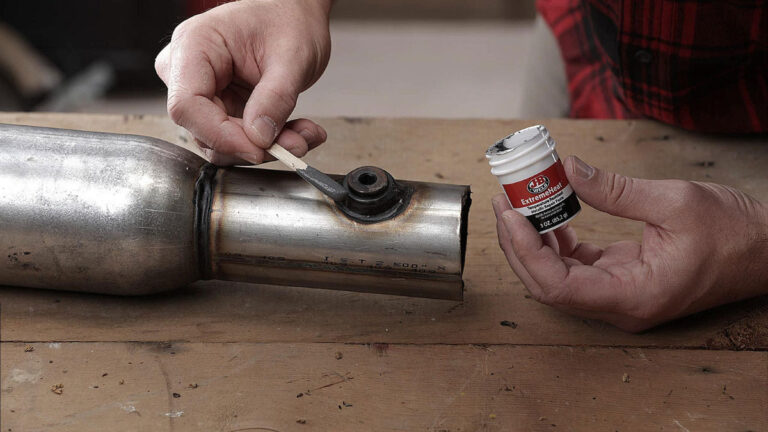FlexBond vs VersaBond: Which Thin-Set Mortar is Better for You?
Choosing the right thin-set mortar can make or break your tiling project. When it comes to FlexBond and VersaBond, both offer unique advantages that cater to different needs. Whether you’re working on a bathroom renovation or a kitchen backsplash, understanding the key differences between these two popular options can save you time and money.
FlexBond is known for its superior flexibility and strength, making it ideal for challenging surfaces and environments. On the other hand, VersaBond provides excellent adhesion and ease of use, perfect for straightforward, everyday tiling tasks. By comparing these two, you’ll be better equipped to select the best product for your specific project requirements.
Key Takeaways
- FlexBond vs VersaBond: FlexBond offers superior flexibility and strength, ideal for challenging surfaces, while VersaBond is more user-friendly and cost-effective for standard ceramic tile installations.
- Composition Differences: FlexBond contains higher dry latex polymers, enhancing its bonding strength and flexibility compared to VersaBond, which has fewer latex polymers.
- Cost and Value: FlexBond is typically around $10 more expensive than VersaBond, reflecting its enhanced performance capabilities, whereas VersaBond provides excellent value for standard projects.
- Performance: FlexBond is better suited for demanding applications, providing high flexibility and bonding strength for hard-to-stick tiles, while VersaBond excels in everyday tiling tasks with good adhesion.
- Ease of Use: VersaBond’s longer working time makes it easier to handle and adjust, making it user-friendly for both DIY enthusiasts and professionals. FlexBond, on the other hand, dries faster and might pose challenges for beginners.
Overview Of Tile Mortar
When tackling tiling projects, choosing the right thin-set mortar is critical. FlexBond and VersaBond are two prominent options from Custom Building Products, known for their unique properties and specific applications.
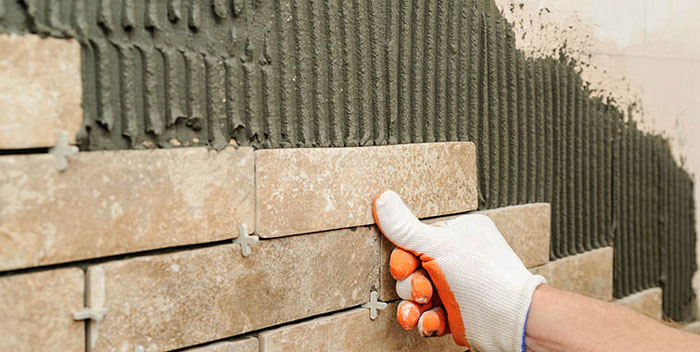
Key Characteristics
- FlexBond:
- Composition: Contains more dry latex polymers.
- Performance: Offers robust flexibility and strength.
- Recommended For: Porcelain, flat-backed, non-vitreous, and hard-to-stick tiles.
- VersaBond:
- Composition: Fewer latex polymers.
- Performance: Suitable for standard installations.
- Recommended For: Standard ceramic tiles.
Cost Consideration
- FlexBond: Approximately $10 more expensive than VersaBond.
Usage Scenarios
- FlexBond:
- Ideal for demanding applications.
- Enhanced flexibility and bonding strength.
- Beneficial for tiles that challenge adherence.
- VersaBond:
- Suitable for simpler tasks.
- Excellent adhesion for everyday ceramic tile installations.
| Feature | FlexBond | VersaBond |
|---|---|---|
| Latex Polymer Content | Higher | Lower |
| Flexibility | More flexible | Standard flexibility |
| Recommended Surfaces | Porcelain, flat-backed, non-vitreous, hard-to-stick tiles | Standard ceramic tiles |
| Cost | ~ $10 more expensive | Less expensive |
Understanding the differences between FlexBond and VersaBond mortars helps you choose the right product for your tiling projects, ensuring the best results and efficient use of resources.
Understanding FlexBond
FlexBond stands out as a high-performance thin-set mortar specifically designed to handle demanding tile installations. From varied surfaces to challenging tile types, FlexBond ensures a robust bond with enhanced flexibility.
Key Features
Composition:
- Dry Latex Polymers: Contains more dry latex polymers than Versabond, enhancing its bonding strength and flexibility.
Price:
- Cost: Generally priced around $10 more than Versabond, reflecting its superior performance capabilities.
Manufacturer:
- Both FlexBond and Versabond come from Custom Building Products, a reputable provider in the industry.
Performance And Applications
Bonding Strength:
- High Flexibility: Ideal for installations requiring high flexibility and strength.
- Tile Compatibility: Suitable for porcelain tile, flat-backed tile, and non-vitreous or hard-to-stick tiles.
| Feature | FlexBond | Versabond |
|---|---|---|
| Composition | More dry latex polymers | Fewer dry latex polymers |
| Price | Around $10 more expensive | More affordable |
| Bonding Strength | Superior, high flexibility | Good, mid-range performance |
| Manufacturer | Custom Building Products | Custom Building Products |
FlexBond’s higher dry latex polymer content ensures superior bonding strength, making it a go-to for challenging surfaces and high-performance requirements. Using FlexBond means investing in quality, especially when dealing with non-vitreous or hard-to-stick tiles.
Understanding VersaBond
VersaBond is a popular thin-set mortar known for its excellent adhesion and ease of use. Manufactured by Custom Building Products, it’s a cost-effective solution for standard ceramic tile installations.
Key Features
Manufacturer:
- Custom Building Products produces VersaBond, ensuring high-quality standards.
Type:
- It’s a latex-modified thin-set, including polymers that enhance bonding strength and flexibility.
Price:
- VersaBond is a budget-friendly option, typically around $10 less expensive than FlexBond.
Composition:
- Contains fewer dry latex polymers compared to FlexBond, still ensuring good flexibility and bonding for most standard applications.
Performance And Applications
Bonding Strength:
- VersaBond provides sufficient bonding strength for standard ceramic tiles. It’s ideal for both walls and floors in residential settings.
Ease of Use:
- Users often find it easy to mix and apply. It’s consistent and reliable, offering a smooth application process, making it suitable for DIY projects and professional installations.
Applications:
- Ideal for ceramic and some porcelain tiles in kitchens, bathrooms, and other standard indoor environments.
| Feature | VersaBond Specifications |
|---|---|
| Manufacturer | Custom Building Products |
| Type | Latex-Modified Thin-Set |
| Price Difference | $10 less than FlexBond |
| Dry Latex Polymers | Fewer than FlexBond |
| Recommended Use | Standard Ceramic Tile |
| Ease of Use | High |
| Application Areas | Residential Walls and Floors |
VersaBond, with its commendable features and cost-effectiveness, stands as a reliable choice for standard tiling projects.
FlexBond Vs VersaBond: A Comparison
When selecting the right thin-set mortar for tiling projects, understanding the nuances of FlexBond and VersaBond can significantly impact your results. Let’s investigate into their key properties and applications to help you make an well-informed choice.
Composition And Characteristics
FlexBond and VersaBond, both from Custom Building Products, are latex-modified thinsets known for their strong adhesive qualities. Here’s a closer look:
Latex Modification:
- FlexBond: Contains a higher concentration of dry latex polymers, enhancing flexibility and bonding strength.
- VersaBond: Includes latex polymers but in a lower concentration compared to FlexBond.
Ease Of Use
Ease of use can make or break a tiling project, particularly for DIY enthusiasts. Here’s how these products compare:
Workability:
- FlexBond: Known to dry faster, which can be challenging when working solo.
- VersaBond: Allows more working time before drying, making it easier to handle.
Mixing:
- FlexBond: For better workability, mix to a looser, peanut butter-like consistency.
- VersaBond: Typically mixed to a standard thinset consistency, which is user-friendly.
Durability And Strength
Durability and strength determine how well the thinset holds up over time:
FlexBond:
- High Performance: Ideal for demanding applications, such as porcelain tiles or hard-to-stick surfaces.
- Flexibility: More flexible due to higher latex content, reducing the risk of cracking.
VersaBond:
- Standard Performance: Well-suited for typical residential projects including standard ceramic tiles.
- Sufficient Strength: Delivers reliable adhesion for most indoor applications like kitchens and bathrooms.
Price And Value
Cost can be a deciding factor when choosing between these two options:
FlexBond:
- Generally around $10 more expensive than VersaBond.
- Higher latex content translates to superior performance, justifying the premium price.
VersaBond:
- More cost-effective, typically $10 cheaper.
- Provides excellent value for standard tiling projects without compromising on quality.
| Feature | FlexBond | VersaBond |
|---|---|---|
| Latex Concentration | Higher concentration of dry latex polymers | Standard concentration of latex polymers |
| Workability | Dries faster, harder to work with solo | More working time, easier to handle |
| Mixing Consistency | Requires looser mix similar to peanut butter | Standard thinset consistency |
| Performance | High performance for demanding applications | Reliable for standard projects |
| Flexibility | Highly flexible, reduces cracking risk | Sufficient for typical installations |
| Cost | Around $10 more expensive | More cost-effective |
Choosing between FlexBond and VersaBond depends on the specific needs of your tiling project. FlexBond is a higher performance, albeit more costly, option for challenging surfaces, while VersaBond offers ease of use and good value for standard installations.
User Experiences And Feedback
Users of FlexBond and Versabond have shared diverse experiences that reveal the strengths and weaknesses of each thin-set mortar option.
Workability and Ease of Use
- FlexBond: Users have reported that FlexBond can be more challenging for beginners. It dries quickly, making tile adjustments difficult once placed. This might not be ideal for those new to tiling projects or working solo.
- Versabond: Versabond offers easier workability. Its longer working time allows for better adjustments, making it a user-friendly option for both professionals and DIY enthusiasts.
Adhesion and Strength
- FlexBond: Highly modified, FlexBond offers strong adhesion, making it suitable for challenging surfaces. But, its high modification level can be unsuitable for specific applications, like when using Schluter Kerdi.
- Versabond: Being lightly modified, Versabond provides adequate strength for a wider range of surfaces, including those where unmodified thinset is recommended, such as with Kerdi products.
Cost
- FlexBond: Generally, FlexBond is more expensive, with a price difference of around $10 compared to Versabond. This cost can be justified by its superior modification and strength for demanding surfaces.
- Versabond: Versabond is a cost-effective option, making it a popular choice for standard tile installations while still offering reliable performance.
Common Pros
- FlexBond:
- High Adhesion: Provides excellent bond strength.
- Flexibility: Ideal for challenging or non-standard surfaces.
- Durability: Reduces the risk of cracking over time.
- Versabond:
- Ease of Use: User-friendly, especially for beginners.
- Versatility: Suitable for a broad range of applications, including Kerdi.
- Cost-Effective: Provides quality performance at a lower price.
Common Cons
- FlexBond:
- Quick Drying Time: Can be difficult for making adjustments.
- Higher Cost: More expensive than Versabond.
- Complexity: Not always suitable for all applications due to high modification.
- Versabond:
- Lower Adhesion: Compared to FlexBond, offers less bonding strength.
- Limited Flexibility: Less suitable for challenging surfaces.
- Basic: May not meet the needs of highly demanding projects.
| Feature | FlexBond | Versabond |
|---|---|---|
| Workability | Difficult for beginners | Easy to use |
| Drying Time | Quick, hard to adjust | Longer working time |
| Adhesion | High modification, strong | Light modification, adequate |
| Cost | Around $10 more expensive | More affordable |
| Suitable Applications | Non-standard surfaces, challenging | Standard installations, Kerdi |
Understanding user experiences with FlexBond and Versabond can guide your choice in selecting the appropriate thin-set mortar, ensuring optimal results for your tiling project.
Conclusion
Choosing between FlexBond and VersaBond depends on your specific tiling needs and project complexity. FlexBond’s superior flexibility and bonding strength make it ideal for challenging surfaces and high-performance requirements. On the other hand VersaBond’s ease of use and cost-effectiveness are perfect for standard installations and DIY projects.
Consider the type of tiles you’re using and the environment of your project. FlexBond is excellent for porcelain and hard-to-stick tiles while VersaBond works well with standard ceramic tiles. Budget and experience level also play crucial roles in your decision.
By understanding the strengths and limitations of each mortar you can make an informed choice that ensures the best results for your tiling project. Whether you prioritize performance or ease of use both FlexBond and VersaBond offer reliable solutions tailored to different tiling needs.
Frequently Asked Questions
What is the main difference between FlexBond and VersaBond thin-set mortar?
FlexBond offers superior flexibility and bonding strength due to a higher concentration of dry latex polymers, making it suitable for challenging surfaces. VersaBond, on the other hand, provides excellent adhesion and ease of use for standard tiling applications, making it ideal for simpler tasks and DIY projects.
Which thin-set mortar is more cost-effective, FlexBond or VersaBond?
VersaBond is generally around $10 less expensive than FlexBond, making it a more cost-effective solution for standard ceramic tile installations while still maintaining good quality and adhesion.
Can I use VersaBond for porcelain tiles?
VersaBond is suitable for standard ceramic tiles but may not be the best choice for non-vitreous or hard-to-stick tiles like porcelain. FlexBond, with its higher dry latex polymer content, is recommended for such challenging surfaces.
How does the drying time compare between FlexBond and VersaBond?
FlexBond dries faster than VersaBond, which can be challenging for solo workers or beginners. VersaBond offers more working time before it dries, making it more user-friendly for those who need additional time to adjust tiles.
Is FlexBond more durable than VersaBond?
FlexBond is more durable and flexible, reducing the risk of cracking and making it ideal for demanding applications. VersaBond, while reliable for standard residential projects, does not offer the same level of flexibility and strength.
What type of mixing consistency do FlexBond and VersaBond require?
FlexBond requires a looser mixing consistency, which can be a bit tricky for beginners. VersaBond has a standard thin-set consistency, making it easier to mix and apply, especially for DIY enthusiasts.
Are there any alternatives to FlexBond?
Cosflex is a good alternative to FlexBond and works similarly, offering flexibility and strong adhesion, suitable for various demanding tiling projects.
What are some user experiences with FlexBond and VersaBond?
Users find FlexBond challenging due to its quick drying time, making adjustments difficult. However, it offers strong bonding for challenging surfaces. VersaBond is praised for its longer working time and user-friendliness, providing adequate strength for a wide range of surfaces and applications.

